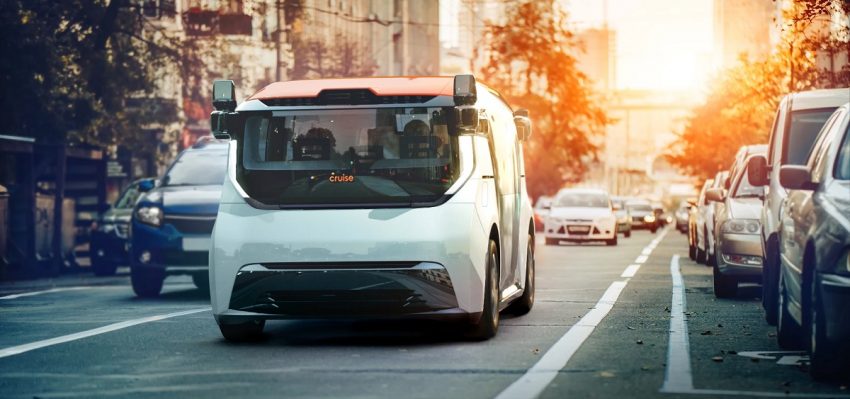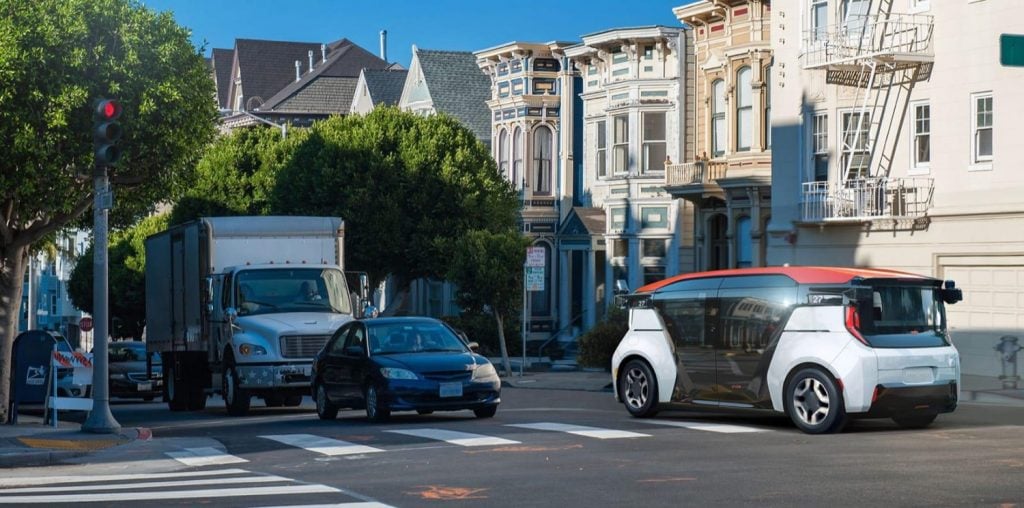GM’s autonomous vehicle technology division, Cruise, has been making some big moves lately, rapidly expanding its operations across the country. Now, Cruise is set to deploy Cruise Origin, a vehicle built from the ground up as a fully autonomous robotaxi specifically designed for ride hailing service. According to Cruise CEO Kyle Vogt, production of the Cruise Origin will begin in just a few days.
Cruise CEO Vogt recently spoke during the Goldman Sachs Communacopia + Technology conference held this week.
“It’s the first time an OEM, a carmaker, General Motors in this case, has made a car with no steering wheel,” Vogt said when asked about the new Cruise Origin. Vogt went on to explain that because Cruise Origin was designed specifically for ride hailing service, the cabin space was much more comfortable “than being scrunched in the back seat of someone else’s sedan,” with an interior layout that includes two opposing bench seats, more legroom, a nice sound system, and “cool lighting.”
Vogt went on to say that the engineering work for Cruise Origin was already completed, and that the autonomous vehicle technology and AI systems currently deployed on public roads via Cruise Chevy Bolt EVs would be merged with the new “form factor” of the Cruise Origin.
“We’ve tested and validated it,” Vogt said. “We actually have run the Origin on public roads, both in Austin and San Francisco we’re testing it.”
Vogt added that Cruise expects the NHTSA will soon grant the final regulatory approval needed to begin production.
Finally, Vogt addressed cost, saying that Cruise Origin “also costs us less to build.”
“An average car [will last] 150,000, 200,000 miles, something in that range,” Vogt said. “The Origin is designed to last a million.”
Vogt said that the extended life of Cruise Origin, as well as a lower upfront cost, would result in “a dramatic reduction in the cost per mile to operate these vehicles, which is a key to unlock for profitability.”
Cruise is now estimated to be covering over 1 million driverless miles per month across its fleet. The company has also faced criticism for a variety of different incidents, including Cruise AVs reportedly causing a traffic jam, and potentially blocking emergency vehicles.
Subscribe to GM Authority for more Cruise Origin news, GM Cruise news, GM technology news, GM business news, and around-the-clock GM news coverage.


















Comments
No controls. What could possibly go wrong?
Testing in San Francisco and Austin! I wonder how long it’s going to take the homeless, and illegals to move in or the criminals to vandalize. GM’s and our taxpayer money could be spent on projects that consumers really want and need.
It’s the 21st C. Blockbuster went out of business because mail order DVDs beat rewinding VHS tapes, and streaming movies beat late fees returning DVDs.
But the idea that subscribing for ride-sharing service will be cheaper, more convenient, and better for the environment than owning a rusting machine that sits in a parking space all day and needs replaced every 10 years is somehow confusing.
No, it’s confusing why people would want to give up the freedom of having his or her own personal vehicle to ride around like a UPS or FedEx package in a germ infested, ugly, soulless box with God only knows who as fellow riders.
The notions if these drones being cheaper, more convenient, safer and more environmentally friendly are lies.
I am sure Taxi’s, Uber and Lyft drivers are excited about Cruise. I am waiting for states to mandate all Taxi’s, Uber, and Lyft drivers to drive an EV. Between, autonomous vehicles and EV’s, I can see this segment of the transportation industry going out of business or bankrupt.